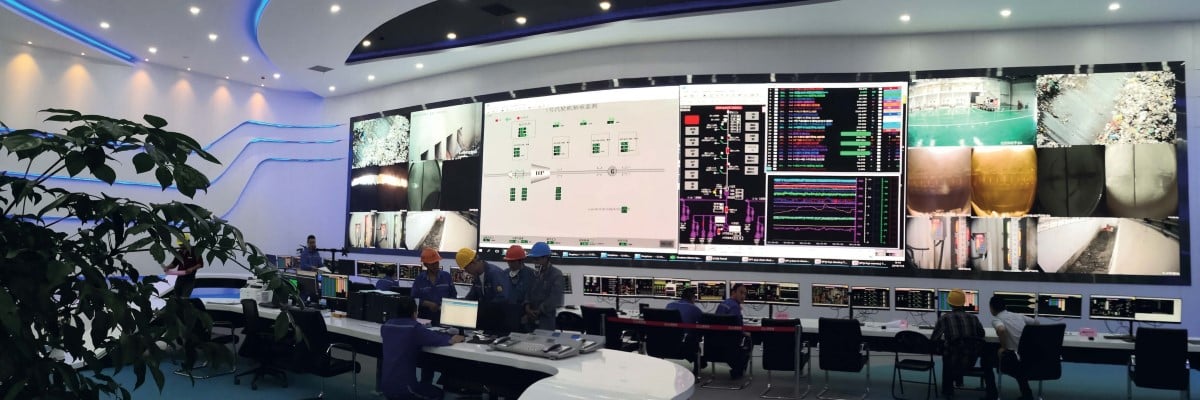Turning waste into sustainable power
Dealing with waste in an efficient way requires advanced technology and determination. Alfa Laval T-series plate heat exchangers are installed in the world’s largest waste incineration power plant in Shanghai, China.
DATE 2023-11-28How many tons of waste can 24 million people produce?
Shanghai is the most modern city in China, as well as the city with the country’s highest level of household waste. Its population of 24 million produces 30,000 tons of rubbish per day. Dealing with so much waste in an efficient way requires advanced technology and determination. China has introduced compulsory waste sorting and Shanghai has taken the lead in the nationwide implementation of refuse sorting measures known as ‘the strictest sorting’ in China ever.
Generating great environmental and energy benefits
Nearly half of the MSW (municipal solid waste) produced in Shanghai is transported to Shanghai Laogang Renewable Resource Recycling Centre on the east coast, for further processing. Being the mainstream process for waste treatment in the world, waste incineration power generation is an important infrastructure for urban sustainable development. It can effectively control the secondary pollution of household waste and bring both environmental and energy benefits. Improved waste sorting will also make waste incineration power generation more stable.
The world’s largest waste incineration power plant to drive sustainable development
As an important measure for the sustainable development of Shanghai’s ecology, the second phase of Shanghai Laogang Renewable Energy Recycling Centre was officially put into operation at the end of June 2019. By October 2020, it was fully operational. The total waste incineration capacity of Shanghai Laogang Phase I and Phase II is around 3 million tons per year. The incineration power generation can reach 1.5 billion kWh per year. With this capacity, Shanghai Laogang is set to become the world’s largest waste incineration plant with non-hazardous waste released into the environment.
Waste becomes sustainable energy
Waste-to-energy generation is the process of generating energy in the form of electricity and/or heat from the primary treatment of waste, or the processing of waste into a fuel source. Incineration is the main waste-to-energy form of waste treatment. It is a technology involving destruction of solid waste by controlled burning at high temperatures and the process is accompanied by the release of heat, which finally can be converted into energy. The operating conditions of the incineration process must be very precise to make it environmentally safe.
Performance, efficiency and sustainability
Alfa Laval T-series plate heat exchangers are used in the flue gas purification system to increase its effectiveness in removing various harmful substances, so that flue gas emissions can meet the strict environmental standards. Alfa Laval equipment is commonly used in many key projects of China’s waste incineration power plants, due to its high energy efficiency abilities, high product quality, design options and reliable operation.
The project manager at Shanghai Laogang Renewable Energy Recycling Centre states:
The process water in this application contains particles so it can be prone to fouling. We decided to use Alfa Laval because we trust in them to make a reliable thermal design and to deliver a product which will help minimize the rate of fouling. The TS20 plate heat exchangers from Alfa Laval have been working well in both Phase I and Phase II of our plant. Today the treatment capacity of the process water has increased by 20% from the design capacity, but the plate heat exchangers continue to meet the cooling load without the need to clean in one-year operation.
The optimal solution
For the Shanghai Laogang’s phase II project, the TS20 plate heat exchangers could deliver maximum capacity using minimal space. Due to the need for greater thermal efficiency and the limited installation space on site, this ruled out shell and tube heat exchangers. The equipment used must be corrosion-resistant as the process media contains chlorine. In addition, fast reduction of the temperature of the dehumidification liquid is necessary to improve efficiency. These are the key concerns of the waste-to-energy power plant.
With over 35 years’ operating experience in China, Alfa Laval has been involved in many key projects in China’s modernization process and continues to be involved in China’s new energy and urban sustainability development.
Industrial line - read more
Alfa Laval designed and selected the TS20 titanium plate gasketed heat exchanger for this project based on the waste-to-energy power plant’s special operating conditions.
Why the customer chose TS20
Severe conditions
Corrosion-resistant titanium plate material was selected to cope with high chlorine operating condition.
Compact frame
Its compact frame fits the largest number of plates into the guides, saving installation space.
Efficient heat transfer
The heat exchanger plate with wide channel spacing is selected, to prevent blockage.
Reliable and easy to maintain
The T-series five-point plate alignment system, bearing box and other features improve equipment reliability and ease of maintenance, reducing operating costs.

